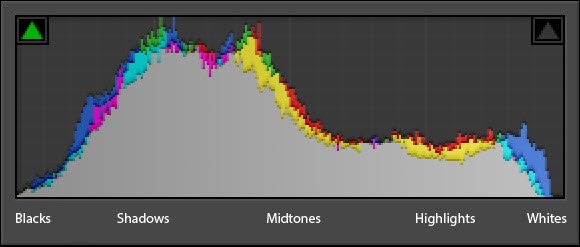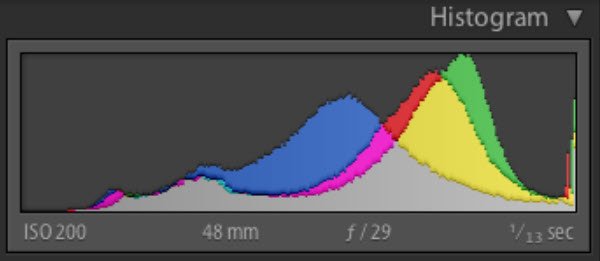ETTR - a technical perspective
This article is directed toward those with a solid understanding of the fundamentals of exposure. To avoid confusion, beginners or those uncomfortable reviewing technical detail may wish to put aside for another day.
“Expose to the Right” (ETTR) is a principle initiated by Michael Reichmann in 2003, directed toward purists wishing to achieve the utmost in image quality. The controversial theory dictates that images should be over-exposed in-camera then readjusted during post-processing to correct for that exposure shift.
Here I offer what is purely a personal viewpoint, albeit with certain assumptions being made on camera design. However, with a 20-year background of working on similar electronic systems I feel I am well positioned to bridge the technical and photography sides of the argument.
The problem to solve
ETTR attempts to minimize the degradation in quality often seen in the darkest areas of an image. This issue is considered to due to inherent sensor noise, a common factor in all electronic circuits. At higher light levels this noise becomes insignificant, becoming more apparent as we work on the darkest (low light = low output signal) areas of the frame.
ETTR attempts to correct for this noise by increasing the output sensor signal by way of over-exposing the image, following up by a correctional step in post processing.
While the goal is admirable in its logic I have yet to so any credible evidence to satisfy a lingering doubt, or instruction on how to best achieve this.
Following is my attempt to apply logic to the ETTR solution looking at both sides of the electronic and camera perspectives.
The ETTR histogram
ETTR is accomplished by the photographer adjusting the histogram output by adding exposure to move display content to the right. The underlying theory is that by adding exposure we are adding signal and thus diminishing the effect of noise.
As an example, the first histogram display below indicates a typically balanced exposure. Note the data in the blacks portion of the histogram, along with the clipping alert.
The second may be typical for a scene following ETTR guidelines, pushing the curve to the right. Note the absence of data in the same (Blacks) area - with exposure increase all of our signals are now moved toward brighter areas, resulting in higher sensor output.
The camera sensor
To begin to understand what ETTR attempts to achieve we must first consider the root cause of the problem, that being the camera sensor. Comprehension of this key component is critical in understanding factors that impact image quality.
Each camera sensor contains millions of cells that convert the light striking them into an analog voltage output.
That output voltage itself is comprised of two components - the voltage generated proportionate to the light hitting the cell (signal) , and low-level background noise as a result of sensor imperfection.
Ideally, we would like the light-proportionate output to be much higher than the noise component, thus rendering it insignificant. As an FYI, the relationship between signal and noise is expressed as the Signal to Noise Ratio (SNR) - the higher the SNR the higher the output quality.
The image to the right indicates this relationship between signal and noise, the higher the signal the less the impact of the noise component.
With an understanding of the relationship between signal and noise, and the effect SNR has on quality let’s move forward and discuss the mechanisms available to increase exposure.
Camera controls that satisfy ETTR
The key aim of ETTR is to increase the lowest level signals (ie shadows) by increasing exposure, thus moving the histogram to the right. This increase in exposure can be accomplished by any of the following methods.
Opening lens aperture
lengthening the exposure (shutter speed)
increasing ISO
setting exposure compensation
With this in mind, let’s now drill down into the impact of each on signal quality and how that pertains to ETTR
Aperture
Opening the aperture of the lens allows more of that light to reach the sensor, and hence increases the output signal level. As noise can be considered a constant this increase will result in a higher SNR and hence quality.
Speed
The shutter speed setting determines the period of time a sensor will be read by the processing system. As might be expected, a greater time yields a higher accumulated output (and hence exposure). However, it must be noted that the noise component is being accumulated in a similar manner, so the sensor SNR remains consistent.
This low light scenario explains why noise may be evident on very long exposures.
ISO
Unlike the days of celluloid film, the ‘sensitivity’ of sensors in digital cameras is neither variable nor adjustable. It is my belief that our modern ISO setting is simply a multiplier of the sensor output, and a carry-over from traditional SLR design. I suggest that increasing ISO simply amplifies the output from the sensor with both the desired signal and noise impacted by a similar degree. Due to the amplification to the entire signal there is no impact on SNR due to changing ISO.
This may explain why grain becomes more evident in elevated ISO scenarios. In order to increase low light levels to a usable value we are increasing noise in a similar manner.
Exposure Compensation - I am including this as a subset of the ISO setting as I expect the process (signal amplification adjustment) to function in a similar manner.
A flawed theory?
Now that we have an understanding of the underlying mechanics let us try to comprehend how this relates to the ETTR principle, and its goal of increasing sensor SNR.
I applaud the motivation to solve the issue but question the results. It seems perfectly logical to me that shadow quality will improve as we allow more light to hit the sensor, however opening up the lens to accomplish this results in secondary implications, namely depth of field and possible increased image distortion.
Concerns remain when adding exposure via other methods (namely speed/ISO/compensation), as once again logic tells me that such adjustments would simply amplify both signal and noise to the same degree.
Conclusion
ETTR is based on a solid goal of improving SNR, but perhaps falls short on closer inspection. My feeling is that improvement of shadow detail can only be achieved by ensuring adequate light is reaching the sensor itself (via aperture or light source), thus negating the effect of inherent senor noise. I can see the issue itself diminishing as technology progresses and the dynamic range of the camera sensor broadens.
With additional steps to the workflow, depth of field implications and increased risk of highlight clipping I will be the decision of each photographer as to whether ETTR is a road they wish to travel.
I would love to hear the arguments of others, especially any that may have evidence that either supports or detracts from my observation.




